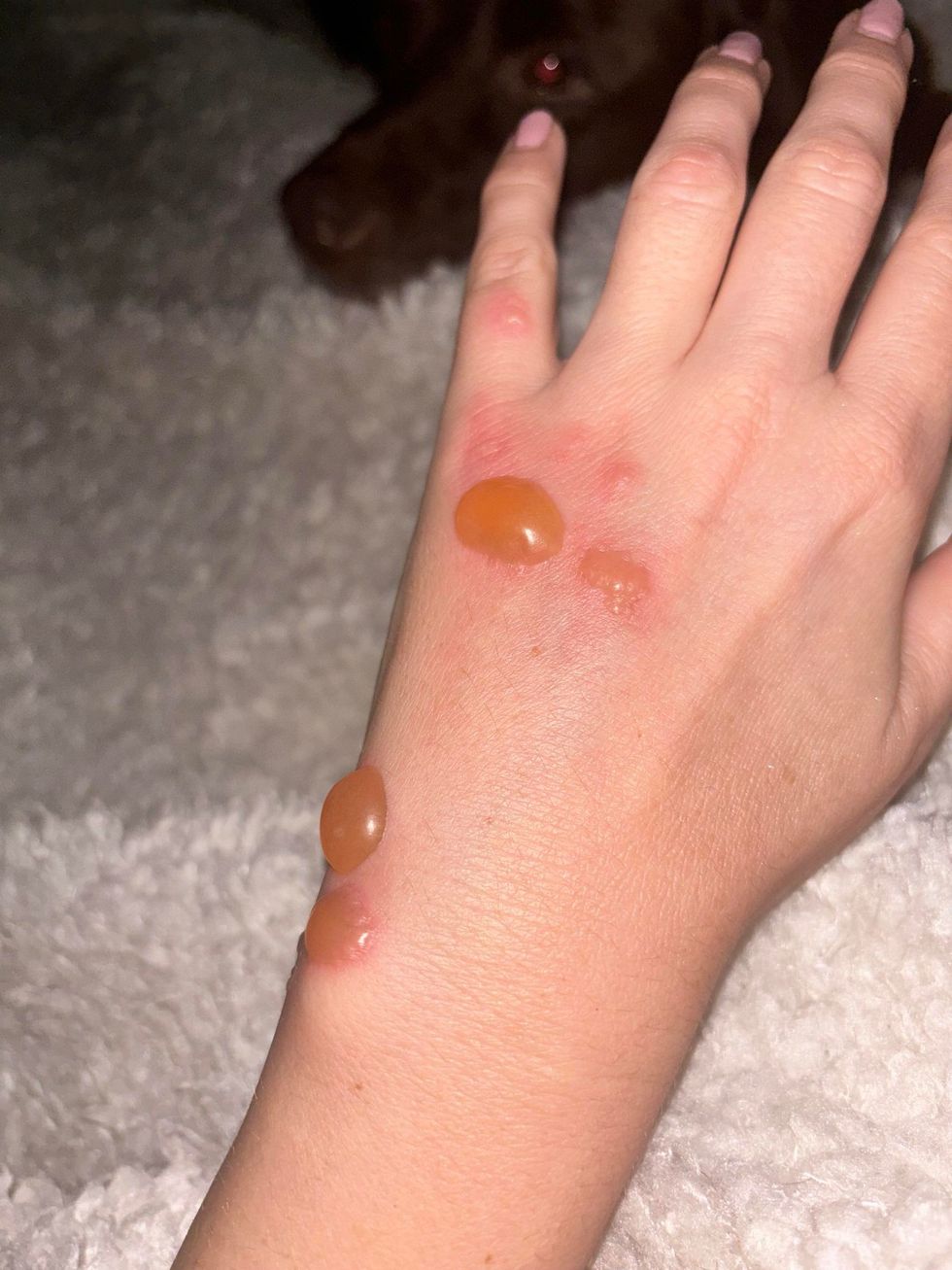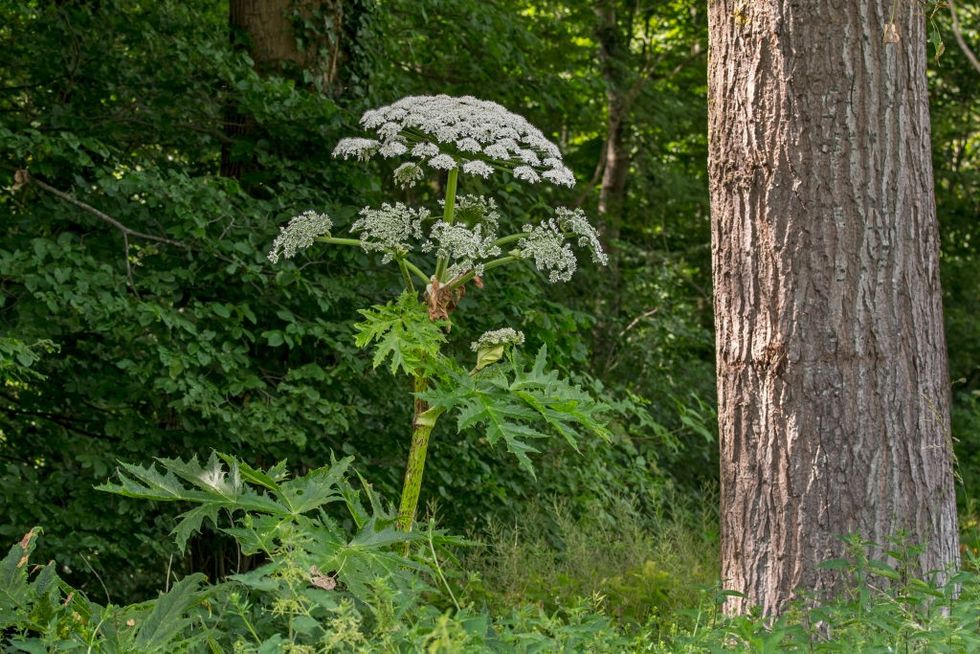Britons warned about 'UK's most dangerous plant' as woman suffers burns causing 'the worst pain'

Britons have been warned about a very 'dangerous' plant in the UK
|PEN NEWS / GETTY IMAGES

Britons should watch out for giant hogweed or risk developing agonising burns
Don't Miss
Most Read
Latest
A 41-year-old woman was left with burns from a dangerous plant she encountered on a walk in the UK.
Kelly Sherry headed out for a walk in Paisley, Scotland with her dog and the next day developed painful blisters.
The injuries were caused after she came into contact with giant hogweed - which has been branded "the UK's most dangerous plant".
About 10 minutes after returning from her walk Kelly noticed redness and irritation on her wrist, and throughout the day it "became more intense".

Kelly was left with 'very painful' and 'unsightly' injuries
|PEN NEWS

Kelly's injuries have meant she hasn't been able to work
|PEN NEWS
She said: "After washing again and applying some Bepanthen to try to relieve the pain, the skin started to resemble burn marks as if sprayed with hot oil from a frying pan. Some marks were bigger than others and showing signs of blistering.
“By the morning all the blistering had worsened and it was very painful to even move the hand or have anything touch it.”
Kelly's doctor prescribed her antihistamines, steroid cream and antibiotics, and was told that hogweed was to blame.
Callum Sinclair, project manager at the Scottish Invasive Species Initiative, agreed that giant hogweed was the likeliest culprit behind Kelly’s injured hands.
He said: “Our view is that these are giant hogweed burns based on the blistering shown in the photos.
“Giant hogweed plants will still be pretty small at this time of the year and so – unless the lady has been in direct contact with them – the likelihood is that contact has come by a third party.
“These burns will likely leave marks and these may get worse, or get itchy and irritable when exposed to strong or direct sunlight."
He advised that Kelly "may need to keep the skin covered for a while" as this response to light can last "a number of years".
A week after her ordeal, her blisters burst with what she described as “the worst pain”.
In addition to the pain, Kelly's injuries have cost her money, as she hasn't been able to work.
She said: “It has been really difficult, not only with it being unsightly and very painful, but I cannot carry out my work as a complimentary therapist.
“It’s my own business, so I’m losing out on earnings as I need to use my hands to carry out treatments, and have needed to cancel appointments until I heal.”
Kelly urged others to be vigilant if they come into contact with the plant so they do not meet the same fate.
She warned Britons to change their clothing and wash their hands, wrists and arms "as soon as possible". Children should also be aware of the "dangers" of the plant.
LATEST DEVELOPMENTS

'Coming into contact with its sap causes severe skin rashes, burns, blisters and scarring'
|GETTY IMAGES
She added: “I’m glad that it has not come into contact with my eyes as this can leave you blind.”
The giant hogweed is native to the Caucasus, but was introduced to Britain as an ornamental plant in 1817. Its spread has since gotten out of control.
Mersey Basin Rivers Trust's Mike Duddy said in 2015 that the giant hogweed was “without a shadow of a doubt the most dangerous plant in Britain”.
Law firm Browne Jacobson offered some guidance on dealing with giant hogweed. They stated: "Giant Hogweed is an exceptionally tall plant with large, white flowers that grows freely around the UK near canals and rivers.
"It is widely known as being the UK’s most dangerous plant as coming into contact with its sap causes severe skin rashes, burns, blisters and scarring. The sap increases sensitivity of the skin to sunlight causing extreme burns.
"A recent study has suggested that grazing sheep could help fight the spread of the invasive and toxic plant. It is usually removed by spraying it with herbicide or removing the flowers to prevent the spread of seeds.
"Whilst you are not legally obligated to remove Giant Hogweed, if you allow it to grow onto other people’s property, a private nuisance action could be taken against you. Section 14(2) of the Wildlife and Countryside Act 1981 creates an offence where any person plants or otherwise causes giant Hogweed to grow in the wild.
"Giant Hogweed can be easily removed using weed killer and it is advisable to do so whilst the plant is young and before flowers grow in April and May. However the plant is a controlled waste, similar to Japanese Knotweed, and so if taken off site can only be disposed of or burnt under license with the required permissions."










